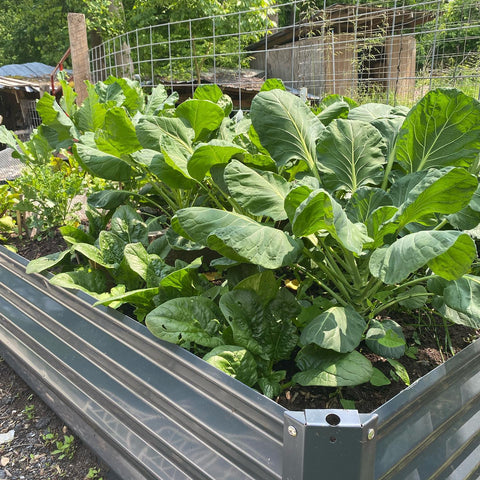In an elevated garden bed, maintaining proper moisture is essential for healthy plant growth. Proper water management can reduce water waste, improve water utilization, and ensure that plants get enough water to meet their needs. This article will detail how to effectively maintain moisture in an elevated garden bed, from soil selection and the addition of organic matter to watering schedules and mulch use to create a healthy garden environment for you.

Choosing the right soil and soil amendment: Choosing a soil with good air permeability and strong drainage is the first step in maintaining moisture in an elevated garden bed. Good mixed soils can include river sand, horticultural soil and leaf rot soil. In addition, the addition of organic materials such as decomposed animal manure, leaf compost and humus can increase the water retention capacity of the soil and improve the soil structure.
Use organic mulch: Covering the surface of an elevated garden bed can reduce water evaporation and water loss from the soil. Organic mulch such as grass sawdust, hay or straw is effective at keeping soil moisture in place and inhibiting weed growth. The mulch should cover the entire bed surface and maintain a certain thickness.
Develop a scientific and rational watering schedule: Developing a rational watering schedule is the key to keeping elevated garden beds hydrated. Avoid over-watering and under-hydration. Usually, early morning or late afternoon is the best time to water, which reduces water evaporation and ensures that water penetrates deeper into the soil, encouraging the plant's roots to grow downward.

Use water-saving irrigation systems: Consider using water-saving irrigation systems, such as drip or sprinkler systems. These systems can deliver water directly to the plant's roots, reducing water waste and evaporation. Drip irrigation systems can accurately transfer water to each plant through quantitative water supply, improving the efficiency of water use.
Check soil moisture regularly: Checking soil moisture regularly is an important way to ensure that the elevated garden bed is moisture appropriate. Use a soil hygrometer or a simple touch test to determine if the soil needs watering. Avoid blind watering and only apply moderate watering when the soil is dry.
Control weed growth: Weed growth can compete for water and nutrients, affecting the water balance of the garden bed. Regular weeding reduces water waste and soil water loss, ensuring that plants get enough water.

Pay attention to plant needs: Different plants have different water needs. Understand the characteristics of the plants you grow and tailor your watering schedule to their needs. Some plants need more water, while others are more tolerant to drought. Provide the right amount of water according to the plant's needs.
By choosing the right soil, using organic matter, developing a scientifically sound watering schedule, using water-saving irrigation systems, checking soil moisture regularly, controlling weed growth, and providing the right amount of water according to plant needs, you can effectively keep your elevated garden bed hydrated. This will provide a healthy growing environment for the plant and promote the prosperity and beauty of the plant. Remember, water management is a process of continuous attention and adjustment, making adjustments accordingly to seasonal and climatic conditions.









